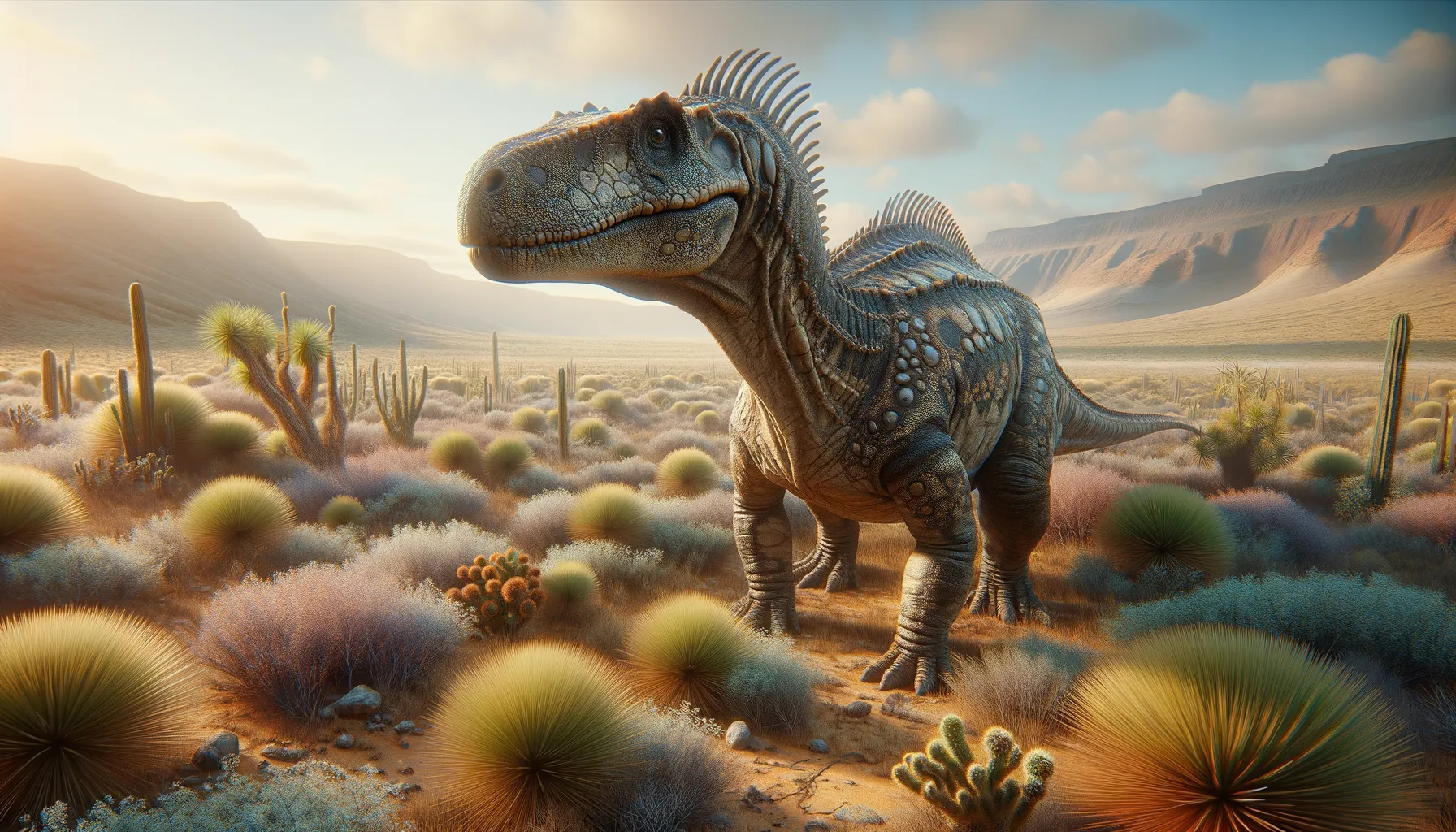
Saltasaurus
Armored herbivore, a silent giant of history.
Period
Cretaceous
Length
About 40 feet from head to tail.
Height
Approximately 12 feet at the shoulder.
Weight
Estimated around 7 tonnes.
The Saltasaurus was a small-sized sauropod dinosaur known for its distinctive armor-like skin with bony plates. Discovered in Argentina, it lived during the Late Cretaceous period. Unlike its larger relatives, Saltasaurus was one of the first known titanosaurids to exhibit body armor, providing insights into the defensive strategies of sauropods that roamed the earth millions of years ago. Despite its massive appearance, it was a herbivore that lived in what is now South America.
Diet
Saltasaurus was an herbivore. It primarily fed on a variety of plant materials available during the Cretaceous period, including ferns, cycads, and conifers. Its long neck allowed it to reach vegetation both low and high.
Hunting
Being a herbivore, Saltasaurus did not hunt. Instead, it would spend its days foraging for plant material. Its sociable nature likely meant it grazed in groups, providing some protection against predators.
Environmental challenges
Saltasaurus faced numerous environmental challenges, including potential droughts, shifts in plant availability, and the threat of predators. These factors required it to adapt to changing conditions in its habitat. The armored plates helped provide defense against carnivorous dinosaurs. With ongoing environmental shifts, competition for food would have been a significant survival factor.
Speed
Relatively slow due to its massive size.
Lifespan
Could live up to 70 years in optimal conditions.
First discovery
Discovered in Argentina in 1975.
Fun Facts
- Saltasaurus was a relatively small sauropod dinosaur that lived about 70 million years ago in what is now Argentina.
- Unlike many of its giant sauropod relatives, Saltasaurus measured only about 40 feet long and weighed approximately 10 tons.
- This dinosaur had bony platelets, called osteoderms, embedded in its skin which helped protect it from predators, making it one of the first armored sauropods to be discovered.
- Saltasaurus is named after the region of Salta in Argentina where its fossils were first found.
- The discovery of Saltasaurus helped scientists learn more about the diversity of sauropods, especially those that lived in South America.
- Saltasaurus had a long neck and tail, but a relatively short body compared to other sauropods like the enormous Argentinosaurus.
- Despite its size, Saltasaurus likely traveled in herds which would have provided safety in numbers from predators.
Growth and Development
Saltasaurus likely experienced rapid growth during its juvenile years to reach adulthood as quickly as possible, minimizing its vulnerability to predators. Initially, hatchlings were small, and their survival depended on staying within the protection of the group. Its growth rate would have slowed in adulthood, extending its lifespan. Fossil evidence suggests developmental milestones were marked by the gradual formation of its protective bony plates.
Habitat
Saltasaurus inhabited the semi-arid regions of what is now South America. It thrived in environments with open plains and sparse forests, areas that would support its feeding habits with diverse plant life. The climate during its existence offered both challenges and opportunities, as it varied between wet and dry periods. Such habitats would be conducive to supporting its large herds, ensuring ample food supply and social interaction.
Interaction with other species
Saltasaurus interacted with both herbivorous and carnivorous dinosaurs. It likely shared its habitat with smaller herbivorous species, requiring coexistence strategies to share resources. It had to be cautious of predatory dinosaurs, relying on its armored skin as a defense mechanism. Group living would have enhanced its protection and improved resource location.
Natural lifespan
Saltasaurus could live up to 70 years given stable conditions.
Reproduction
Saltasaurus, like other dinosaurs, likely laid eggs to reproduce. Nesting in colonies may have been a strategy to increase the survival rate of hatchlings. Parental care, if any, is difficult to determine, but the scale of nests suggests a systematic reproductive approach. Fossilized egg sites offer insights into its reproductive habits and early life stages.
Social behaviour
Saltasaurus is believed to have been a social creature, possibly living in herds. This social structure could offer protection against predators and allow efficient foraging. Communication within the group might have been achieved through vocalizations or other behaviors. Such social systems are common among modern herbivores for improved survival.
Fossil locations
The first fossils of Saltasaurus were found in the Salta Province of Argentina. Paleontologists have focused on South America for additional discoveries of its remains. Sites where Saltasaurus fossils have been excavated offer a glimpse into the Late Cretaceous ecosystem. Fossil evidence from these locations helps scientists understand the distribution and lifestyle of this armored sauropod.
